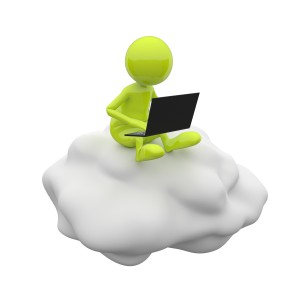 I wrote a blog post recently on the fallout of the revelations about the US National Security Agency (NSA) spying last year. One of my concerns at the time was the balkanization of the Internet. Balkanization is the process of drawing national borders around the Internet, much the same as physical borders. We would no longer have the World Wide Web, instead it would be broken up into the Web of Germany, the Web of Japan, the Web of Chile, and so on. This would be done to protect a nation from activity such as spying on another nation. National Internet traffic would stay within country boundaries and a strong national firewall would be constructed for traffic that had to move across the border. I have been reading stories the past week that have confirmed my fears: nations are slowly moving toward just such a model.
I wrote a blog post recently on the fallout of the revelations about the US National Security Agency (NSA) spying last year. One of my concerns at the time was the balkanization of the Internet. Balkanization is the process of drawing national borders around the Internet, much the same as physical borders. We would no longer have the World Wide Web, instead it would be broken up into the Web of Germany, the Web of Japan, the Web of Chile, and so on. This would be done to protect a nation from activity such as spying on another nation. National Internet traffic would stay within country boundaries and a strong national firewall would be constructed for traffic that had to move across the border. I have been reading stories the past week that have confirmed my fears: nations are slowly moving toward just such a model.
Germany
A recent article out of the UK reveals that Germany is floating plans for a European communications network meant to bypass the US and prevent spying by the NSA and the British counterpart, the GCHQ. German Chancellor Angela Merkel is quoted as saying:
“Above all we’ll talk about European providers that offer security to our citizens, so that one shouldn’t have to send e-mails and other information across the Atlantic, rather one could build up a communications network inside Europe.”
The Germans are particularly incensed by revelations last year that the Chancellor’s cell phone was monitored from the US Embassy in Berlin. This is just the beginning of a proposal, but it feels like the beginning of walls being built.
Brazil
According to a recent article in IEEE Spectrum, Brazil’s President Dilma Rousseff is pushing legislation: “… to force Internet companies such as Google and Facebook to store local data within the country’s borders. She also wants to build submarine cables that don’t route through the United States, set up domestic Internet exchange points, and create an encrypted national e-mail service.” Now, those are not just switches and routers that would be directed inward but national cables would be off limits, too. In other words, Brazilian traffic could only flow over Brazilian cables.
China
The Great Firewall of China already exists; it restricts Chinese citizens’ access to the full Internet. There are censorship mechanisms in place to ensure that information going in and out of China meets government standards. The same filters are already in place in Russia although not to the same extent. India is also looking for ways to close the borders of the Internet. All of these efforts counter one of the basic premises of the Internet—the fact that it is open and accessible to all.
My Thoughts
I agree with a recent open letter to President Obama from Peter Singer and Ian Wallace of the Brookings Institute. They state in the letter:
“The sooner that we can articulate a clear, robust case for a U.S. vision for the future of the Internet, the better. And that needs to be one that, while acknowledging the natural shift away from U.S. control, makes both the pragmatic and principled arguments for preserving the values that have made the Internet such a successful driver of positive global economic, political and social change.”
The Internet is not US-centric, although history and some countries would suggest otherwise. It must remain an open exchange without borders, without censorship, and without state oversight. The whole metaphor of the “cloud” transcends borders and allows the Internet to operate efficiently and openly. Advancements in networking technology have allowed us to operate across the globe and I believe that it would be a giant step backwards to erect artificial barriers where they don’t belong.
Are you concerned about a splintering of the Internet? Let me know your thoughts.
 About Kelly Brown
About Kelly Brown
Kelly Brown is an IT professional, adjunct faculty for the University of Oregon, and academic director of the UO Applied Information Management Master’s Degree Program. He writes about IT and business topics that keep him up at night.






 Cloud computing has been a buzz-word for a number of years now. Perhaps because it is such a nebulous/ethereal term (cloud?) that has been used to describe a number of different configurations and scenarios. You are most likely using some sort of cloud computing already but it is worth asking the hard questions to make sure you have the basics covered.
Cloud computing has been a buzz-word for a number of years now. Perhaps because it is such a nebulous/ethereal term (cloud?) that has been used to describe a number of different configurations and scenarios. You are most likely using some sort of cloud computing already but it is worth asking the hard questions to make sure you have the basics covered.